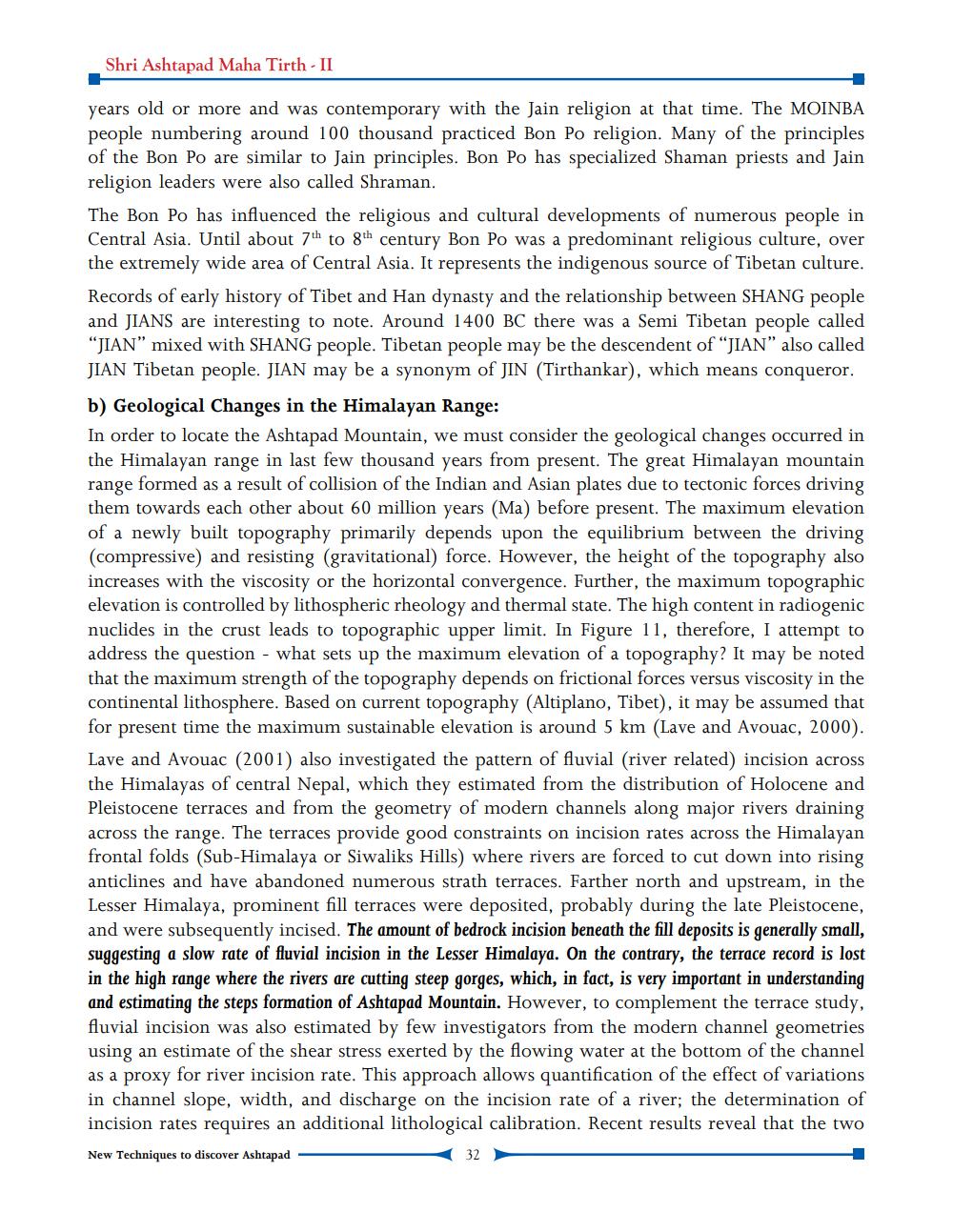________________
Shri Ashtapad Maha Tirth - II
years old or more and was contemporary with the Jain religion at that time. The MOINBA people numbering around 100 thousand practiced Bon Po religion. Many of the principles of the Bon Po are similar to Jain principles. Bon Po has specialized Shaman priests and Jain religion leaders were also called Shraman. The Bon Po has influenced the religious and cultural developments of numerous people in Central Asia. Until about 7th to 8th century Bon Po was a predominant religious culture, over the extremely wide area of Central Asia. It represents the indigenous source of Tibetan culture. Records of early history of Tibet and Han dynasty and the relationship between SHANG people and JIANS are interesting to note. Around 1400 BC there was a Semi Tibetan people called "JIAN" mixed with SHANG people. Tibetan people may be the descendent of "JIAN" also called JIAN Tibetan people. JIAN may be a synonym of JIN (Tirthankar), which means conqueror. b) Geological Changes in the Himalayan Range: In order to locate the Ashtapad Mountain, we must consider the geological changes occurred in the Himalayan range in last few thousand years from present. The great Himalayan mountain range formed as a result of collision of the Indian and Asian plates due to tectonic forces driving them towards each other about 60 million years (Ma) before present. The maximum elevation of a newly built topography primarily depends upon the equilibrium between the driving (compressive) and resisting (gravitational) force. However, the height of the topography also increases with the viscosity or the horizontal convergence. Further, the maximum topographic elevation is controlled by lithospheric rheology and thermal state. The high content in radiogenic nuclides in the crust leads to topographic upper limit. In Figure 11, therefore, I attempt to address the question - what sets up the maximum elevation of a topography? It may be noted that the maximum strength of the topography depends on frictional forces versus viscosity in the continental lithosphere. Based on current topography (Altiplano, Tibet), it may be assumed that for present time the maximum sustainable elevation is around 5 km (Lave and Avouac, 2000). Lave and Avouac (2001) also investigated the pattern of fluvial (river related) incision across the Himalayas of central Nepal, which they estimated from the distribution of Holocene and Pleistocene terraces and from the geometry of modern channels along major rivers draining across the range. The terraces provide good constraints on incision rates across the Himalayan frontal folds (Sub-Himalaya or Siwaliks Hills) where rivers are forced to cut down into rising anticlines and have abandoned numerous strath terraces. Farther north and upstream, in the Lesser Himalaya, prominent fill terraces were deposited, probably during the late Pleistocene, and were subsequently incised. The amount of bedrock incision beneath the fill deposits is generally small, suggesting a slow rate of fluvial incision in the Lesser Himalaya. On the contrary, the terrace record is lost in the high range where the rivers are cutting steep gorges, which, in fact, is very important in understanding and estimating the steps formation of Ashtapad Mountain. However, to complement the terrace study, fluvial incision was also estimated by few investigators from the modern channel geometries using an estimate of the shear stress exerted by the flowing water at the bottom of the channel as a proxy for river incision rate. This approach allows quantification of the effect of variations in channel slope, width, and discharge on the incision rate of a river; the determination of incision rates requires an additional lithological calibration. Recent results reveal that the two New Techniques to discover Ashtapad




